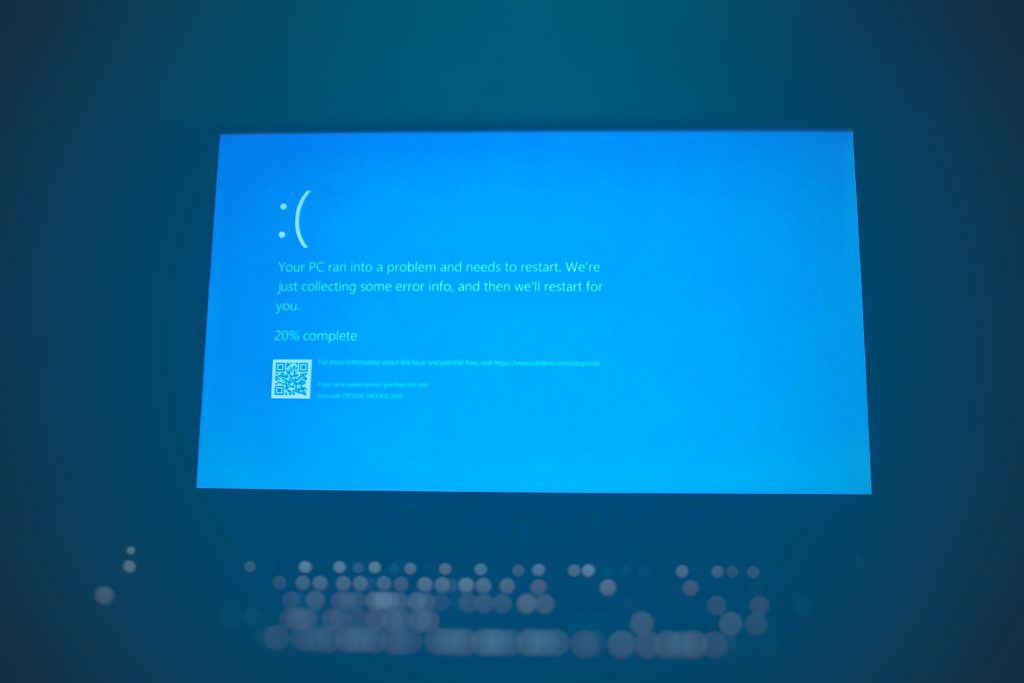Computers are complex systems that cannot always avoid breakdowns and failures. Even the most expensive and upgraded laptop is subjected to breaking down if not exploited properly. It is crucial to understand if you are an experienced user and interact with electronic gadgets daily.
You do not need to call a specialist each time you notice problems. Almost every small malfunction can be fixed. Just like you choose where to buy an essay, you may find a source to provide you with some pieces of advice. For example, read this article to find out about the most common laptop issues and the ways of solving them.
Overheating
Computer overheating leads to a significant slowdown in its work and frequent system crashes. Due to exposure to high temperatures, some computer elements may also fail. It is especially true about laptops that lack ventilation. To fix this problem at once, you must understand the main reasons for overheating. There are two of them.
First, the cooling system may not work. In such a case, check if all fans are spinning. The second reason may be the insufficient capacity of the cooling system. This issue usually occurs after an incorrect upgrade of the machine. Depending on the reason, you should either clean the air vents manually or update the BIOS.
Blue Screen Error
If this kind of problem appears rarely, everything can be solved by a simple reboot. Thus, there’s no need to panic. Still, if it happens periodically, you should understand that something is wrong with your laptop.
You may use the BlueScreenView utility to determine what exactly is not working correctly. More often, you might face problems with drivers, lack of RAM, or a critical increase in temperature inside the system unit. The simplest solution is to reinstall the system and drivers.
Slow Performance
Perhaps, everyone has encountered this problem. There are numerous reasons, so below we will consider the most common ones.
- New operating system. You may wonder: how the update of the OS may entail problems with my laptop? But here is the point. If you install the newest Windows on a weak computer, it will slow down.
- Hard drive. Many people start to panic without understanding the issue. But everything can turn out to be quite obvious and even ridiculous. The hard drive may be full. In this case, you must either clean it or purchase an additional one (HDD or SSD).
- Viruses. Inexperienced users can often download a virus along with any file from the Internet. Thus, it is not always clear how to deal with such problems. Of course, it is best to control surfing initially and download files from secure sites. Nevertheless, if the problem occurs, it is recommended to download the CCleaner program and check your computer with it. Then, you can back up the result with an antivirus.
A Laptop Does Not Turn On
If the laptop does not show any signs of life, you should check the power system for the reasons of failure. First of all, check all connections and extensions. Removing and reinstalling the battery of the laptop may help solve the problem. Moreover, try to disconnect all external devices. In some cases, it gives a positive result.
Slow Internet
As a rule, it is impossible to get all the Internet speed promised by a provider. Therefore, all the figures are approximate. Still, if you receive less than 70% of the speed, you need to understand there is a problem. It can hide either on the side of your provider or on your side.
First, you should try to connect another gadget to the Internet. If the network is distributed via Wi-Fi, then you need to connect the cable directly to the laptop. In case nothing changes, you need to consult with your provider. If the provider is unable to fix the problem, turn to another one so as not to overpay.
A Laptop Makes Loud Noises
A strange beep-like sound occurs when your computer’s motherboard detects some kind of problem. This sound alert often indicates that the motherboard cannot detect the RAM module. In this case, it is usually sufficient to pull the RAM stick out of the slot and put it back in. The problem may also occur because of the incorrect upgrade. Sounds can be a sign of hardware incompatibility.
No Sound
Many reasons can entail this kind of issue, but all of them are usually divided into three subcategories:
- absence of sound after installation/reinstallation of the operating system;
- absence of sound without obvious prerequisites;
- no sound on the headphones.
In the first case, it is 99% that the problem is related to the sound card drivers. In extreme cases, you can install the drivers manually. For doing this, you need to know the full name of the sound card.
In the third case, it is most likely that you have to replace the headphones. Why? Few people know that there exist different headphones for PCs and laptops.
The second case is the most difficult one. The reason may be hidden behind not-so-obvious things.
- Check the sound output in the settings. Delve into the effects, turn off unnecessary ones, and set up a channel transfer.
- If you work with Windows, it is worth checking the status of the video card and whether it is enabled at all.
- As a last resort, you may turn off the computer and check the BIOS to see if the sound card is displayed there.
Final Words
This article aimed to provide you with the simplest problems and possible ways to their quick solutions. If you notice that your laptop issues are much more complicated and serious, it is recommended to turn to experts.
Remember that economizing is not always a good idea. When it comes to the “fate” of your gadget and the integrity of your data, be ready to order professional services.
Is a freelance tech writer based in the East Continent, is quite fascinated by modern-day gadgets, smartphones, and all the hype and buzz about modern technology on the Internet. Besides this a part-time photographer and love to travel and explore. Follow me on. Twitter, Facebook Or Simply Contact Here. Or Email: [email protected]



![23 Best Football Streaming Apps Free on Android [2023]. [All Leagues Streaming] Apps to Watch Live Football Matches](https://axeetech.com/wp-content/uploads/2022/11/Apps-to-Watch-Live-Football-Matches-1.jpg)




Leave a Reply